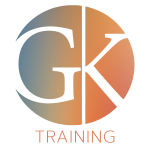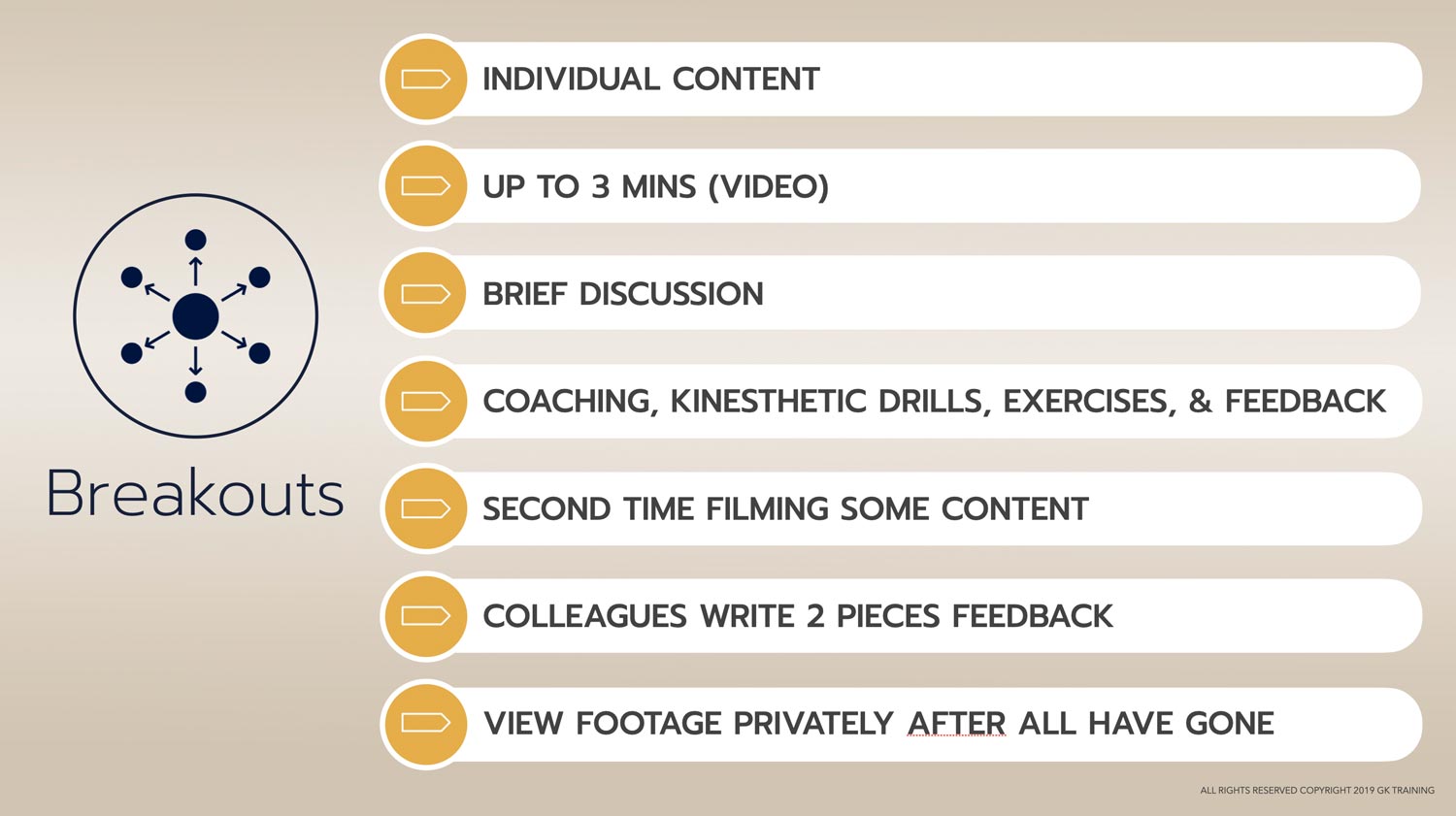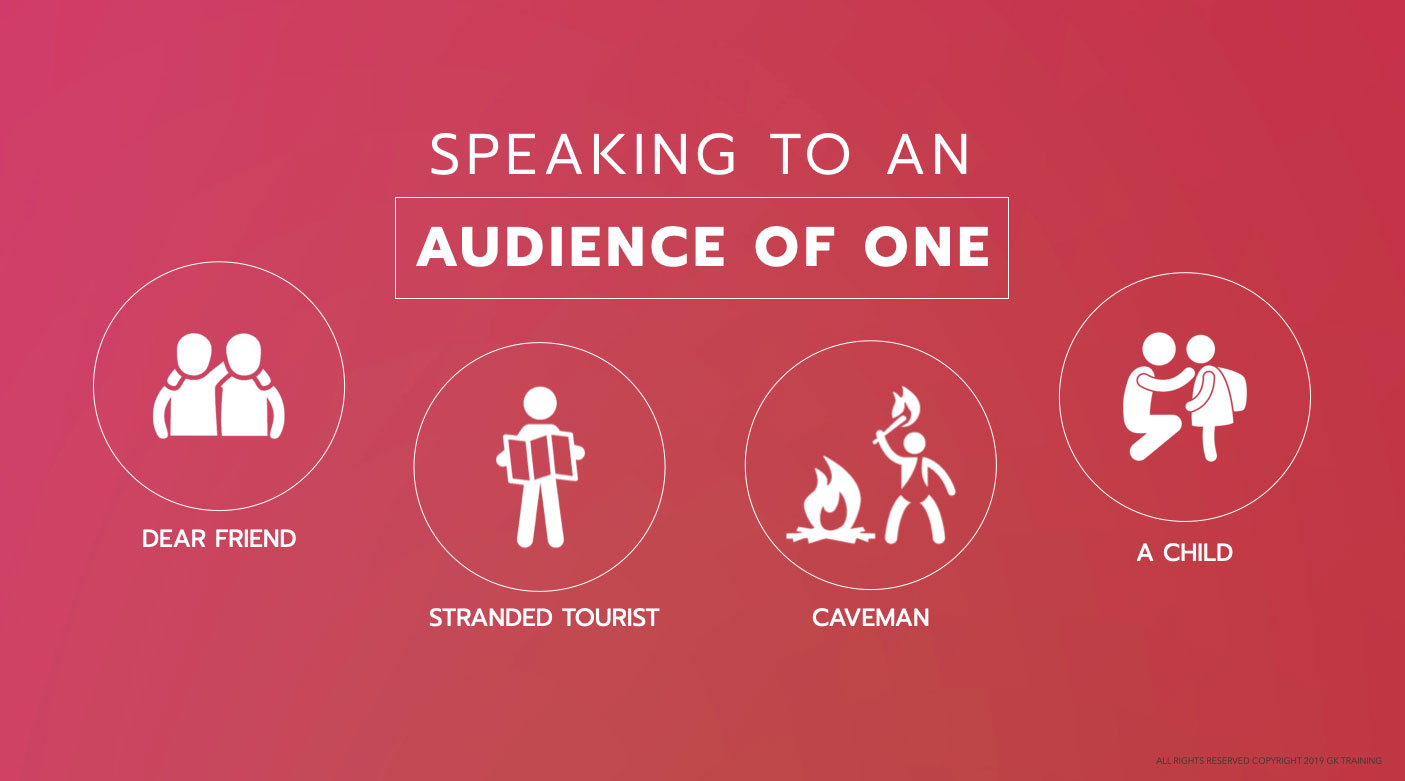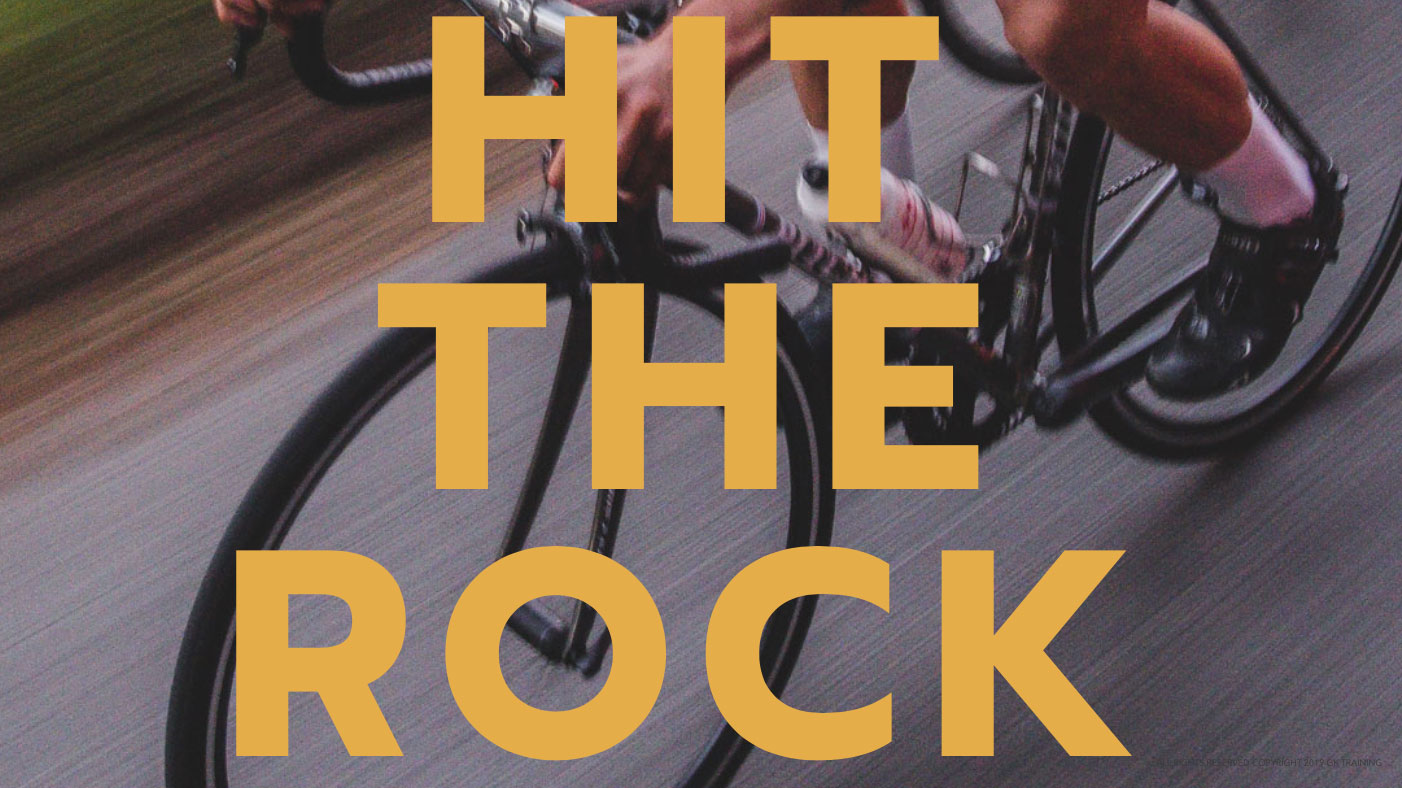PROGRAM SCHEDULE
EXECUTIVE PRESENCE 1.0
The schedule below helps you navigate your customized program with helpful tips and deep dives into the subject matter for each component of your day. Don't forget to check out the add-ons at the end to further customize your program based on relevant content for your employees.
Executive Presence Run of Show
90 MINUTE WORKSHOP
WELCOME
VIRTUOUS CYCLE OF GOOD COMMUNICATION
HOW: We examine the relationship between Content and Delivery. While most communication training examines (and even debates) the ratio of which matters more, we focus on how to unlock a virtuous cycle in which better delivery actually unlocks.
CONTEXT:
SEE HOW OUR TRAINING HELPED KENJI USE THE VIRTUOUS CYCLE TO ELIMINATE “UMS” and “URS”
WATCH A QUICK PRIMER ON THE DEFINITION OF THE VICIOUS AND VIRTUOUS CYCLES OF COMMUNICATION
BREAKOUT 1
SELF-LED (Baseline)
WANT TO READ A TESTIMONIAL FROM A BREAKOUT SESSION?
THREE SURPRISES
ACTIVITY: Participants consider the bandwidth with which kids communicate; they complete a thought experiment about 4 one-to-one communication scenarios and embed the key realization with a mneumonic exercise; participants lay the groundwork for liberating themselves from the “confidence trap,” via volunteer or call-and-response if live or chat feed if remote.
To learn more about the confidence trap and the twin hazards of thought suppression and distinction, watch the first 5 mins of our 10-year anniversary company message. SPOILER: if you’re telling yourself not to do something, you’re already doomed to fail…:-)
THINKING, FEELING, AND DOING
WARM-UP
ACTIVITY: Participants complete a group warm up exercise and recite customized tongue twisters in unison.

CHECK OUT GK LIVE DAILY WARM-UPS OR WATCH ARCHIVED VERSIONS ON YOUTUBE
TRANSPARENCY
CONTEXT:
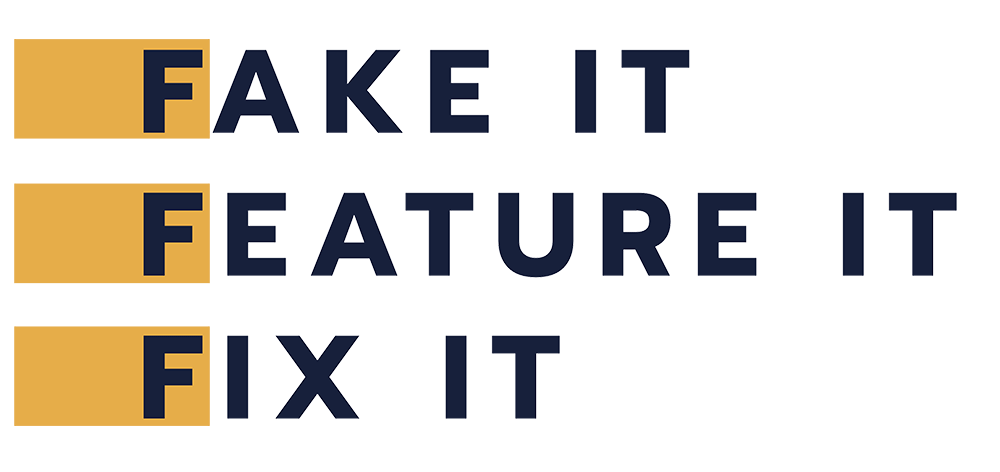
Watch a 90 second explainer.
3 F's In Action
WANT TO KNOW THE PHILOSOPHY BEHIND TRANSPARENCY? WATCH THIS 2 MINUTE EXPLAINER.
VOCAL VARIETY
LEARN MORE:
WHAT CAN YOU LEARN ABOUT VOCAL VARIETY BY READING TO KIDS?
KINESTHETIC LEARNING
LEARN MORE:
BREAKOUT 2
SELF-LED
CHECK OUT A TESTIMONIAL FROM A BREAKOUT SESSION.
HOMEWORK AND
NEXT STEPS
ACTIVITY: The session wraps up with a preview of the reinforcement emails each participant will receive, an introduction to GK’s interactive practice app Question Roulette (participants receive access to a custom version), and guidance on HW.
CONTEXT:
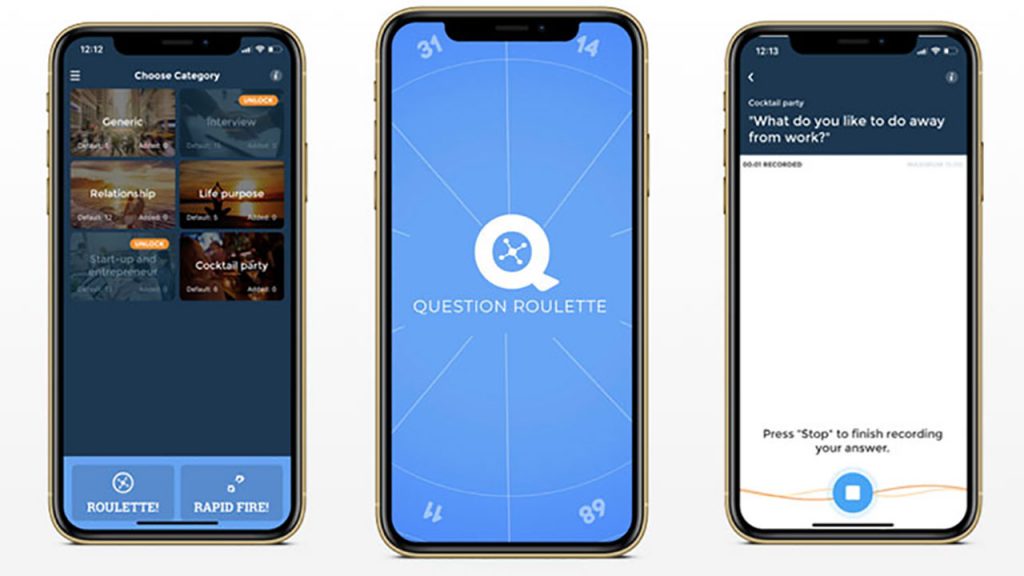
THE GK PRACTICE APP “QUESTION ROULETTE”
VOCAL VARIETY
WHAT CAN YOU LEARN ABOUT VOCAL VARIETY BY READING TO KIDS?
ACTIVITY: Participants map each of the P’s to the effect on an audience, as outlined in research (conducted by GK Founder Michael Hoeppner and colleagues at Columbia Business School, UCLA, Univ of Chicago, et al) on the impact of the 5 Ps on political audiences.
They receive technqiues to modulate each of the 5 P’s independently and multiple kinesthetic exercises to increase vocal variety, including the GK tools Silent Storytelling, Impediment Drill, and the Four Archetypes.
TRANSPARENCY
HOW: Participants learn the Three F’s of Transparency: Fake it, Feature it, and fix it. They learn and use six essential “transparency phrases”, as well as Transparency via embodied cognition using a balancing exercise.

Watch a 90 second explainer.
3 F's In Action
ACTIVITY: After learning the alliterative 3 F’s framework, participants craft a “Transparency phrase” they can use to navigate challenges and mistakes
Using the set of Transparency cards from GK’s Conversation(TM) Card Game, participants learn and deploy 6 different GK transparency phrases, intergrate their own original one, and practice using them to navigate “mistakes”.
Participants deepen the learning with the use of Transparency cards from GK’s Conversation(TM) Card Game and add a kinesthetic exercise titled “A Mistake is not a Mistake,” in which participants are quite literally thrown off balance to instill a muscle memory experience that mistakes are only mistakes if a speaker treats them as such.
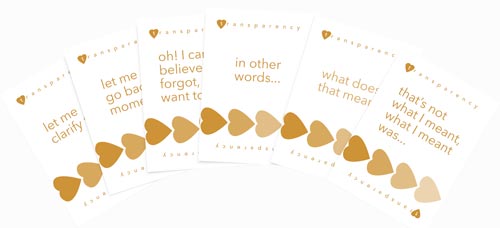
GK TRANSPARENCY CARDS
